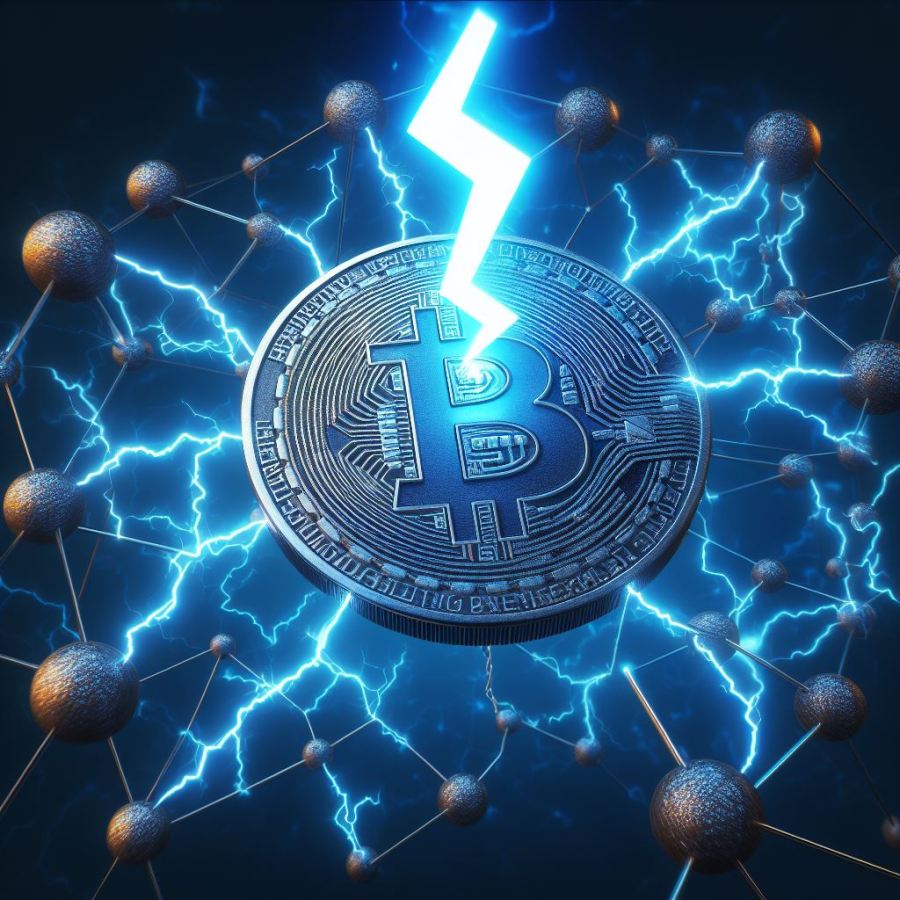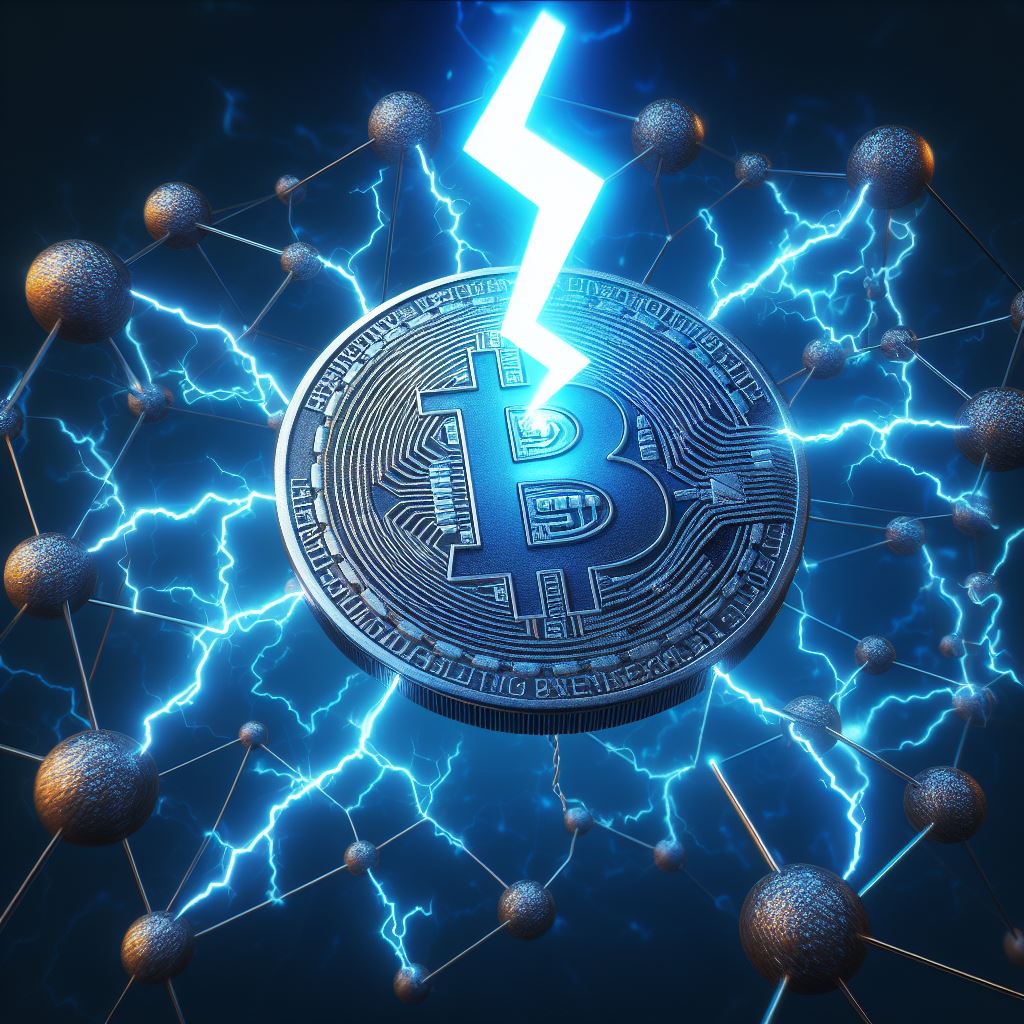The Bitcoin Lightning Network is a system that allows people to send and receive Bitcoin quickly and cheaply, without using the main Bitcoin blockchain. It works by creating special channels between two or more parties, where they can exchange Bitcoin without waiting for confirmation from the whole network.
The channels are secured by smart contracts, which ensure that the parties can only spend the Bitcoin they have committed to the channel. The channels can be closed at any time by either party, and the final balance will be recorded on the main Bitcoin blockchain.
You can think of the Lightning Network as a network of roads that connect different cities. The main Bitcoin blockchain is like a highway that connects all the cities, but it is often congested and expensive to use.
The Lightning Network is like a network of smaller roads that connect some of the cities directly, allowing them to bypass the highway and save time and money. However, the smaller roads have a limited capacity, and they require trust between the parties that use them.
What does Bitcoin Lightning Network do?
The Lightning Network is designed to make Bitcoin more scalable, meaning that it can handle more transactions per second and serve more users. It also aims to make Bitcoin more suitable for everyday payments such as buying a coffee or tipping someone online. Some of the benefits of the Lightning Network are:
Faster transactions
Transactions on the Lightning Network can be completed in seconds or milliseconds, compared to 10 minutes or more on the main Bitcoin blockchain.
Lower fees
Transactions on the Lightning Network are very cheap, often less than a cent, compared to several dollars or more on the main Bitcoin blockchain.
More privacy
Transactions on the Lightning Network are not recorded on the public ledger, unlike transactions on the main Bitcoin blockchain. This means that it is more difficult to trace, and to link identities.
More innovation
The Lightning Network enables new features and applications that are not possible on the main Bitcoin blockchain, for example, micro-payments.
Challenges
The Lightning Network is a relatively new technology. It has limitations, and it faces challenges. They include:
Technical complexity
The Lightning Network requires users to have a good understanding of how it works, and how to use it safely. Users need to manage their own channels, funds, backups and security. They also need to run special software and hardware to access the network.
Liquidity issues
The Lightning Network depends on having enough funds locked in the channels to support the transactions. Users need to have enough balance in their channels to send or receive payments, and they need to find routes through other channels if their direct channel is not available. This can sometimes result in failed or delayed transactions.
Trust issues
The Lightning Network relies on trust between the parties that use it. Users need to trust that their channel partners will not disappear with their funds. They also need to trust that the network nodes will not censor, or tamper with, their transactions. There are mechanisms to prevent or punish dishonest behaviour, but they are not perfect or risk-free.
What is the difference between the Bitcoin network and the Lightning Network?
The differences between Bitcoin network and Lightning Network include:
Bitcoin network is the main system that records and verifies all the Bitcoin transactions in a public ledger called the blockchain. It uses a process called mining, where computers compete to solve complex maths problems and earn new Bitcoins. However this process is slow and costly, and limited in how many transactions it can handle per second.
Lightning Network is a system that works on top of the Bitcoin network, allowing people to send and receive Bitcoin quickly and cheaply, without using the blockchain.
It uses a process called channelling, where people create special connections with each other and exchange Bitcoin without waiting for the whole network to agree. However, this process is complex, risky and dependent on how much money people have in their channels.
You can think of the Bitcoin network as a big road that connects cities, but it is often crowded and expensive to use. The Lightning Network is like a network of smaller roads that connect some of the places directly, allowing them to bypass the big road and save time and money. However, the smaller roads have a limited capacity, and they require trust between the people that use them.
What is an example of how the Bitcoin Lightning Network operates?
The Bitcoin Lightning Network is a system that allows users to make fast and cheap transactions with Bitcoin, without having to record every transaction on the main blockchain. It works by creating payment channels between two or more parties, where they can exchange Bitcoin without waiting for confirmation from the network. The payment channels are secured by smart contracts, which ensure that the final balance of each channel can be settled on the blockchain at any time.

An example of how the Lightning Network works:
Nicole and Jie want to use the Lightning Network to pay each other for various goods and services. They create a payment channel by depositing some Bitcoin into a multi-signature address, which requires both of their signatures to spend. This transaction is recorded on the blockchain, and it represents the opening of the channel.
Nicole and Jie can now send and receive Bitcoin within their channel, without broadcasting every transaction to the network. They do this by updating a balance sheet that records how much Bitcoin each of them owns in the channel. The balance sheet is signed by both parties, and it can be used to prove the final state of the channel if needed.
Nicole and Jie can make as many transactions as they want within their channel, as long as they do not exceed the total amount of Bitcoin that they deposited. For example, if Nicole and Jie each put 0.1 BTC into the channel, they can exchange up to 0.2 BTC between them. The transactions are instant and have very low fees, since they do not involve the network.
When Nicole and Jie are done transacting, they can close their channel by broadcasting the final balance sheet to the network. This transaction will settle the final balance of the channel on the blockchain, and it will release the Bitcoin from the multi-signature address to Nicole and Jie according to their respective shares. This transaction is recorded on the blockchain, and it represents the closing of the channel.
Different channels
The Lightning Network also allows users to make payments across different channels, without having to open a direct channel with every party they want to transact with. This is done by using intermediaries who route the payments through their channels for a small fee. For example, if Nicole wants to pay Peter, but she does not have a direct channel with him, she can use Jie – who has channels with both Nicole and Peter – as a go-between. Nicole can send a payment to Jie, who will forward it to Peter, and both transactions will be secured by smart contracts that ensure that no one can cheat or steal the funds.
Bitcoin Lightning Network: Conclusion
The Lightning Network is an innovative solution that aims to improve the scalability and usability of Bitcoin as a payment system. It enables users to make fast and cheap transactions with Bitcoin while preserving its security and decentralisation features. The Lightning Network is still in development, but has already been deployed on the mainnet and, at the time of writing, had over 10,000 nodes and 40,000 channels.





